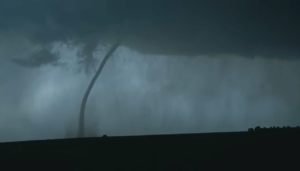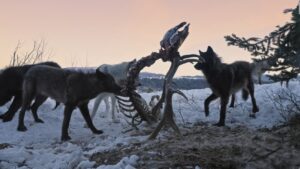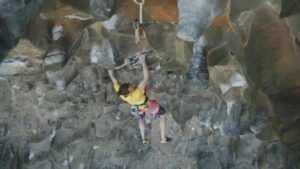A classic History Channel documentary that has it all: a riveting adventure tale, arguments about cannibalism, a few talking heads who will set your teeth on edge, and some atrocious acting. Arctic Tomb is also a surprisingly deep documentary.
The film begins with some fantastic quotes and jolly maritime music, setting the scene for John Franklin’s final voyage, an ill-fated attempt to chart the Northwest Passage. “On the map, it looked so simple.” “They didn’t realize how distressingly difficult it is.” “It was the Holy Grail.” The talking heads gasp.
John Franklin
Next, we dive into John Franklin’s life. Franklin joins the Navy straight after school. Later, two Arctic expeditions bring him fame and a knighthood. But his career stalls during an unsuccessful seven-year-stint as the Governor of Tasmania. When given the opportunity to take command of the Erebus and the Terror to “discover” the Northwest Passage, he leaps at the chance to return to the Arctic and rebuild his reputation.

John Franklin. Photo: Wikipedia
The tale of Franklin’s doomed expedition is familiar to many but can still surprise. This writer’s eyebrows were raised by an off-hand remark about the crew packing a monkey for entertainment. I laughed out loud during perhaps the strangest period costume scene. Lady Franklin, having sewn a new Union Jack for the expedition, casually drapes it over the sleeping captain. He awakes to chide her about the significance of a flag-draped body to sailors, wide-eyed and without a hint of emotion.
Into the Northwest Passage
The expedition proper begins on July 12, 1845. The Terror and the Erebus leave Greenland and cross Baffin Bay. They were last seen by two arctic whalers at the end of July, who reported that morale was high, and all was going well.
But eventually, heavy ice stopped them from going north or west. Instead, they circumnavigated Cornwallis Island and then found a haven on Beechey Island for winter. When spring appeared, they left in a hurry. Leaving no records behind, but three headstones.

Beechey Island graves. Photo: Jerry Kobalenko
They went south, down the Peel Sound. But Franklin “didn’t realize that the Peel Sound is like a pitcher plant, that admits an insect and then closes behind it.” By the time they grasped this lesson, it was too late.

HMS Terror. Illustration: Wikimedia Commons
Back at home, Lady Franklin is getting nervous. Her constant campaigning leads to the organization of the first of many search parties. But it was too late, unbeknownst to her. Franklin was already dead.
Another winter rolls around
Franklin had survived the second winter, only to find the ships still trapped by ice off Cape Felix, the northwestern tip of King William Island. He died soon after a sled team set off to explore the interior of King William Island. The crew lucky enough to survive this second winter would then have to endure a third. By the spring of 1848, they had effectively been trapped for three years.
Eventually, the survivors decide to set off south, on a march that none survived. We are treated to some more amusing dramatized scenes, including a man having his frostbitten fingers sawn off. Not to be outdone, we have a talking head demonstrating his own frostbite injuries (“I’ve got my fingers in a draw over there”), another who sits in front of a shelf of human skulls, and a third who is introduced as “a leading authority on 19th-century canning techniques.” You certainly can’t accuse this documentary of lacking expert input.
You can watch the full video below.






